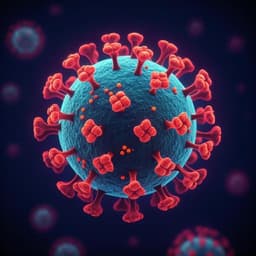
Medicine and Health
Ultrastructural insight into SARS-CoV-2 entry and budding in human airway epithelium
A. L. Pinto, R. K. Rai, et al.
Explore groundbreaking research that delves into the infection of human airway epithelium by SARS-CoV-2 variants, including the B.1.1.7 strain. This study, conducted by a team from Royal Brompton Hospital and Imperial College London, reveals fascinating insights into viral entry mechanisms and intracellular behavior.
~3 min • Beginner • English
Related Publications
Explore these studies to deepen your understanding of the subject.







